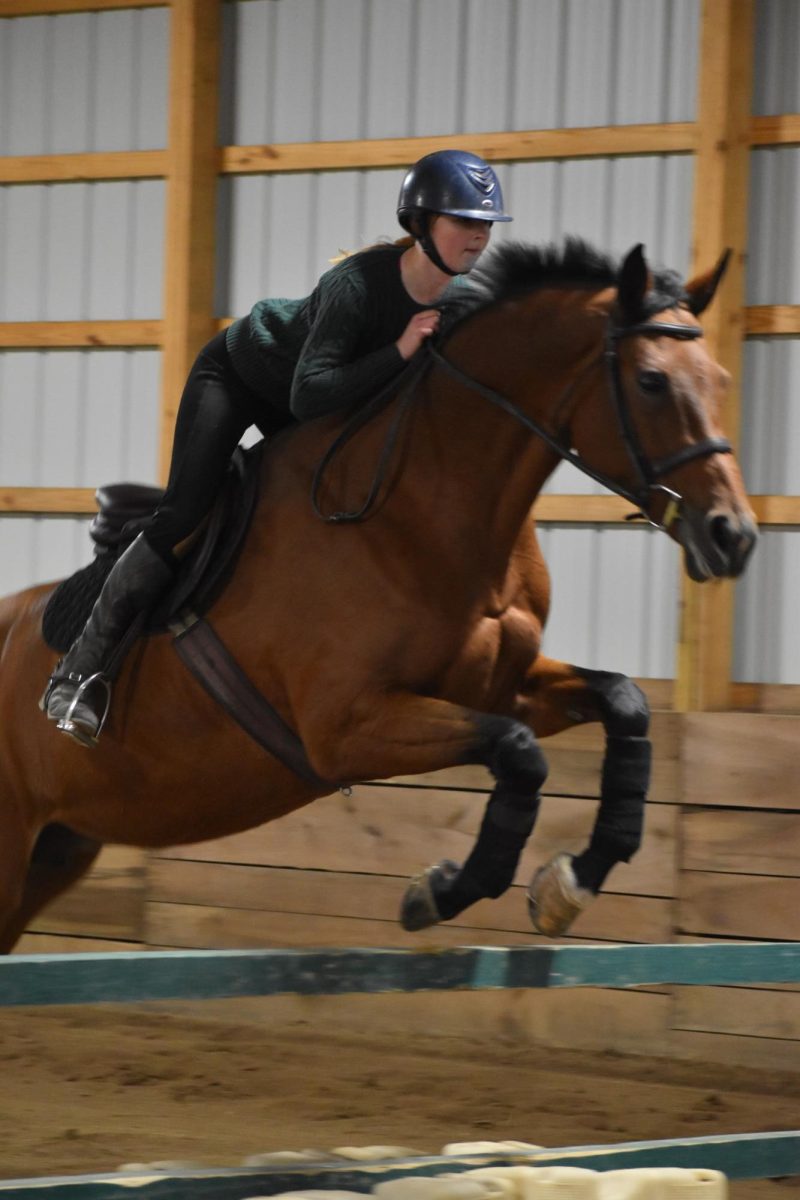 In many high schools around the nation, students often like to compare themselves to others. CHS is one such school. in the hallways and classrooms of CHS, students constantly compare themselves to others. I would be lying if I said that I never tried to compare myself to others. As a matter of fact, I have done this many times, intentionally and even unintentionally. However, self-evaluations are more effective in relation to comparison with peers.
In many high schools around the nation, students often like to compare themselves to others. CHS is one such school. in the hallways and classrooms of CHS, students constantly compare themselves to others. I would be lying if I said that I never tried to compare myself to others. As a matter of fact, I have done this many times, intentionally and even unintentionally. However, self-evaluations are more effective in relation to comparison with peers.
According to an article on education.com, there are two types of social comparisons, an upward and downward comparison. An upward comparison is one in which a student compares himself to another student that typically does better in school. A downward comparison is when a student chooses a comparison target who typically doesn’t perform as well in school.
Both comparisons have their strengths and weaknesses. An upward comparison might cause the student to work harder, but it also might cause the student to have lower self-esteem. On the other hand, a downward comparison may cause higher self-esteem but may lead to the student not working as hard and he needs to.
Both types of comparisons can be helpful but can also have a high risk of backfiring. However, the risks can outweigh the benefits if one excessively compares. The biggest risk with upward comparisons is that the student loses confidence in his performances and if he continues to compare, he may potentially perform even worse than before. Likewise, the most dangerous hazard with downward comparisons is that the student might not put in as much effort if he is doing better than the comparison target.
A possible solution for students is to compare their results with none other but themselves. By self-evaluating their performances, students can compare with their past results and notice both their strengths and weaknesses, setting the precedent for future improvement.
Also, students would not suffer a loss in confidence since they would know that they have already performed to the best of their ability, and they know that they can reach that level again. The lack of work ethic issue that comes with downward comparisons can also be eliminated since the students would most likely try to perform as well as they have done before or try to perform even better.
Arsalan Siddiqui is a reporter for the HiLite. The views in this column do not necessarily reflect the views of the HiLite staff. Reach him at [email protected].


































![British royalty are American celebrities [opinion]](https://hilite.org/wp-content/uploads/2024/03/Screenshot-2024-03-24-1.44.57-PM.png)



















![Chelsea Meng on her instagram-run bracelet shop [Biz Buzz]](https://hilite.org/wp-content/uploads/2024/04/IMG_2446-1200x838.jpg)
![Review: Quiet on Set: The Dark Side of Kids TV is the long awaited exposé of pedophilia within the children’s entertainment industry [MUSE]](https://hilite.org/wp-content/uploads/2024/04/unnamed.jpg)
![Review: “The Iron Claw” cannot get enough praise [MUSE]](https://hilite.org/wp-content/uploads/2024/04/unnamed.png)
![Review: “The Bear” sets an unbelievably high bar for future comedy shows [MUSE]](https://hilite.org/wp-content/uploads/2024/03/unnamed.png)
![Review: “Mysterious Lotus Casebook” is an amazing historical Chinese drama [MUSE]](https://hilite.org/wp-content/uploads/2024/03/0.webp)
![Review in Print: Maripaz Villar brings a delightfully unique style to the world of WEBTOON [MUSE]](https://hilite.org/wp-content/uploads/2023/12/maripazcover-1200x960.jpg)
![Review: “The Sword of Kaigen” is a masterpiece [MUSE]](https://hilite.org/wp-content/uploads/2023/11/Screenshot-2023-11-26-201051.png)
![Review: Gateron Oil Kings, great linear switches, okay price [MUSE]](https://hilite.org/wp-content/uploads/2023/11/Screenshot-2023-11-26-200553.png)
![Review: “A Haunting in Venice” is a significant improvement from other Agatha Christie adaptations [MUSE]](https://hilite.org/wp-content/uploads/2023/11/e7ee2938a6d422669771bce6d8088521.jpg)
![Review: A Thanksgiving story from elementary school, still just as interesting [MUSE]](https://hilite.org/wp-content/uploads/2023/11/Screenshot-2023-11-26-195514-987x1200.png)
![Review: When I Fly Towards You, cute, uplifting youth drama [MUSE]](https://hilite.org/wp-content/uploads/2023/09/When-I-Fly-Towards-You-Chinese-drama.png)
![Postcards from Muse: Hawaii Travel Diary [MUSE]](https://hilite.org/wp-content/uploads/2023/09/My-project-1-1200x1200.jpg)
![Review: Ladybug & Cat Noir: The Movie, departure from original show [MUSE]](https://hilite.org/wp-content/uploads/2023/09/Ladybug__Cat_Noir_-_The_Movie_poster.jpg)
![Review in Print: Hidden Love is the cute, uplifting drama everyone needs [MUSE]](https://hilite.org/wp-content/uploads/2023/09/hiddenlovecover-e1693597208225-1030x1200.png)
![Review in Print: Heartstopper is the heartwarming queer romance we all need [MUSE]](https://hilite.org/wp-content/uploads/2023/08/museheartstoppercover-1200x654.png)






















![Review: Ladybug & Cat Noir: The Movie, departure from original show [MUSE]](https://hilite.org/wp-content/uploads/2023/09/Ladybug__Cat_Noir_-_The_Movie_poster-221x300.jpg)

![Review: Next in Fashion season two survives changes, becomes a valuable pop culture artifact [MUSE]](https://hilite.org/wp-content/uploads/2023/03/Screen-Shot-2023-03-09-at-11.05.05-AM-300x214.png)
![Review: Is The Stormlight Archive worth it? [MUSE]](https://hilite.org/wp-content/uploads/2023/10/unnamed-1-184x300.png)





